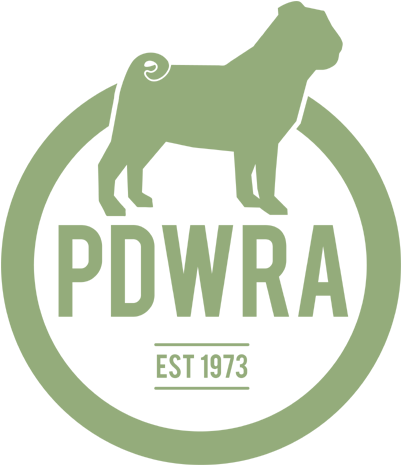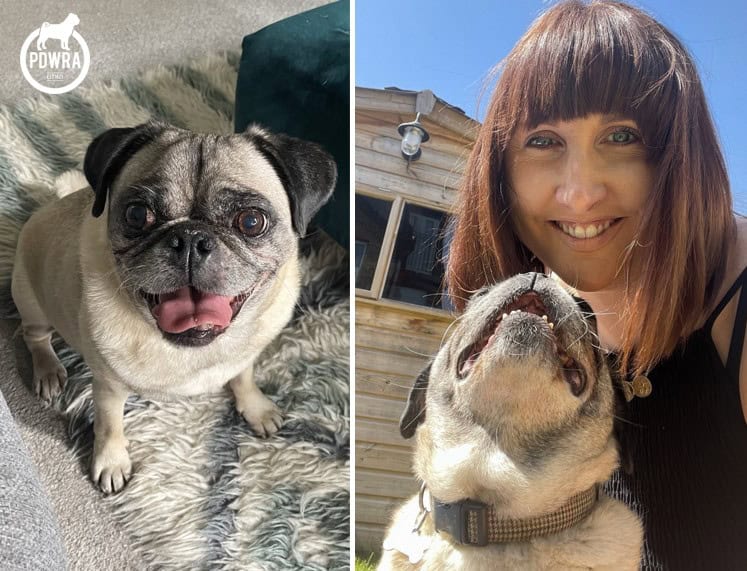
by Yasmin | 8 Dec, 2024 | Blog, News, Rescue Stories
Victoria on Howie.
I have always loved dogs and have owned various breeds my whole life but my love affair with pugs started in December 2016 when an elderly neighbour had to go into hospital and needed someone to look after her little black pug. Pugsley came to stay for Christmas, and it was love at first sight. I could not get over her quirky habits and how friendly and cuddly she was. When the time came for her to go back to her owner, I just couldn’t stop thinking about what great little dogs pugs are, and over the course of the next six months I did lots of research into the breed and came across PDWRA.

I was contacted by the VAC for my area almost immediately after submitting my application form and within a few weeks a home check had been completed and I was an approved adopter. It was then a case of waiting for the right dog to come along. In late October 2017, I got the call I had been waiting for. A bonded pair needed re-homing and I jumped at the chance. Howie (fawn) aged five and Moog (black) aged 11 arrived on 9 November 2017 via a volunteer road train travelling across the country with the final stop being Reading services on the M4 where I was ready and waiting for them. The rest as they say is history!
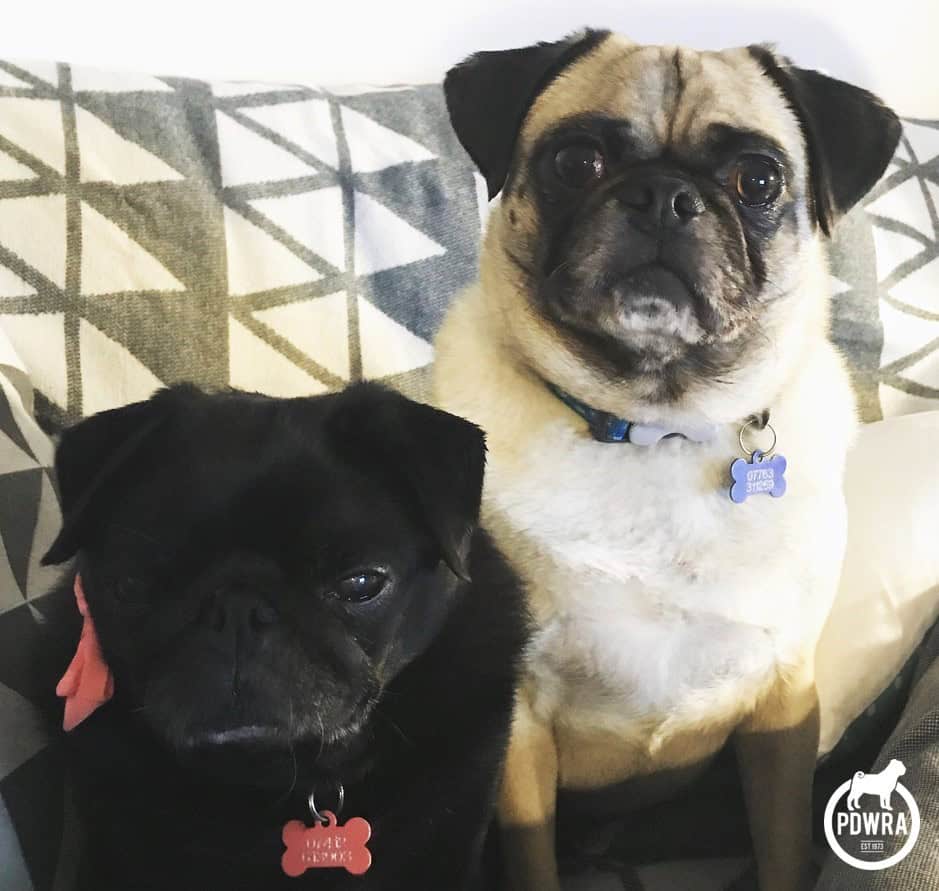
I used to work in a rehoming kennel so I would always choose to adopt rather than buy a puppy and after nine months of reading and preparing, I took the plunge and completed the online form to adopt from PDWRA. I am of the opinion why only rescue one if you can have two so stated on my form that I was happy to take a bonded pair. I can still remember now how excited I was when I clicked the submit button.
Howie is the most loving dog I have ever met. Never before have I known a dog that likes cuddles so much. He has classic pug traits – barking at animals on the tv being one as well as barking at other dogs when we are out and about but despite being a bit highly strung, he is my soul mate in dog form.
Howie originally arrived with his first wife Moog who he had been with his whole life. When she passed away, we thought it only right that we look to PDWRA to help us find him a new girlfriend. In March 2019, we agreed to foster Minnie and see how she got on with Howie. Needless to say, we became failed fosterers and it was a love match (well more so on his side, she took some time to come around to his adoring ear washing and constant stalking). They became the best of friends and spent five very happy years together before we very sadly and suddenly lost her in late October this year. We are all missing her very much.

Howie was five when I got him and he is now 12 years old and a double widower, but he is still young at heart, enjoying his walks and chillaxing on all the cushions on the sofa – oh boy does he really love a cushion! He can’t hear very well, and his eyesight isn’t what is used to be, but he is still enjoying life as my numero uno.
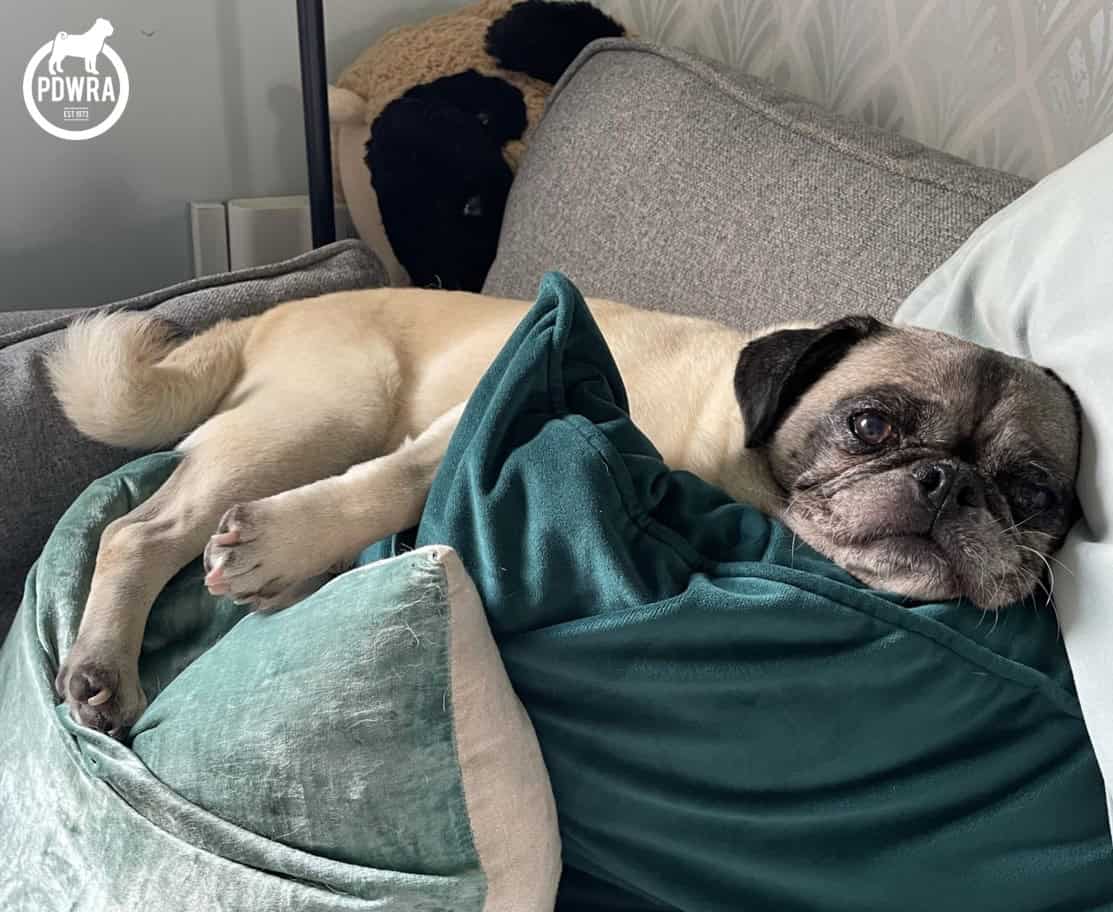
The adoption process was really easy to navigate from completing the form online and paying the registration fee to the home check followed by the payment of the adoption fee and then the exciting part, the collection of the pugs. The VACs and volunteers are always so helpful and knowledgeable and the majority of the people that helped me adopt Howie are still actively involved with the charity even now, many years later.
I think anyone considering adopting or fostering a pug should be aware, if they are not already, that they are not your average dog. In fact, I am not sure that we can call them dogs as they are like no other. One big thing to be aware of is that when people say that they are a companion breed multiply this concept by at least three and that is how much attention a pug needs alongside most of them having zero concept of personal space!
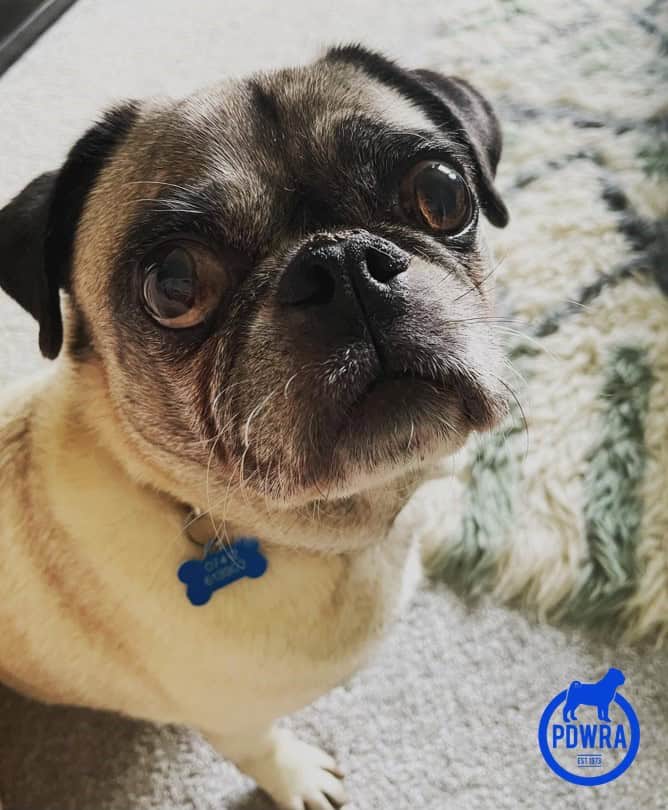
They snore like nothing you have ever heard before and my goodness me do they shed their fur (well the fawn ones do due to being double coated, the blacks less so). However, they are small dogs with the biggest personality and so much love to give. I have been both an adopter and a fosterer (albeit it failed) as well as having a stint as a VAC and it is the most rewarding thing to see a little dog come into their own upon being taken in by PDWRA. Pugs are not without their health conditions, and it is important to note that many have issues that will require long term medical care, but my experience is that the charity are brilliant at providing advice and guidance on this and ensuring that any health conditions are identified early on.
My partner Tom and I cannot thank PDWRA enough for bringing Howie (and our other beautiful black girls) into our lives. Howie is literally our first-born child, and he is the best big brother to our two year old human child (I am pretty sure that I probably have more photos of him than I do of my daughter!). We wouldn’t change him for the world and sincerely hope we have a good few more happy years together.
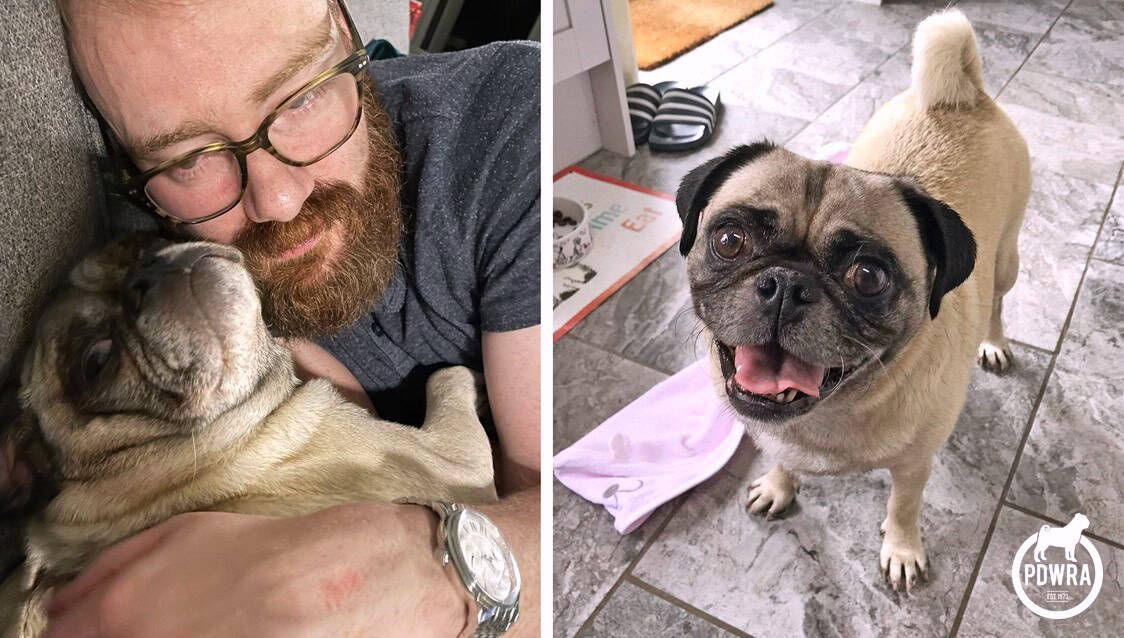
If you would like to foster or adopt, please go to our webpages:
https://pugwelfare-rescue.org.uk/fostering-a-pug/
https://pugwelfare-rescue.org.uk/adopting-a-pug/
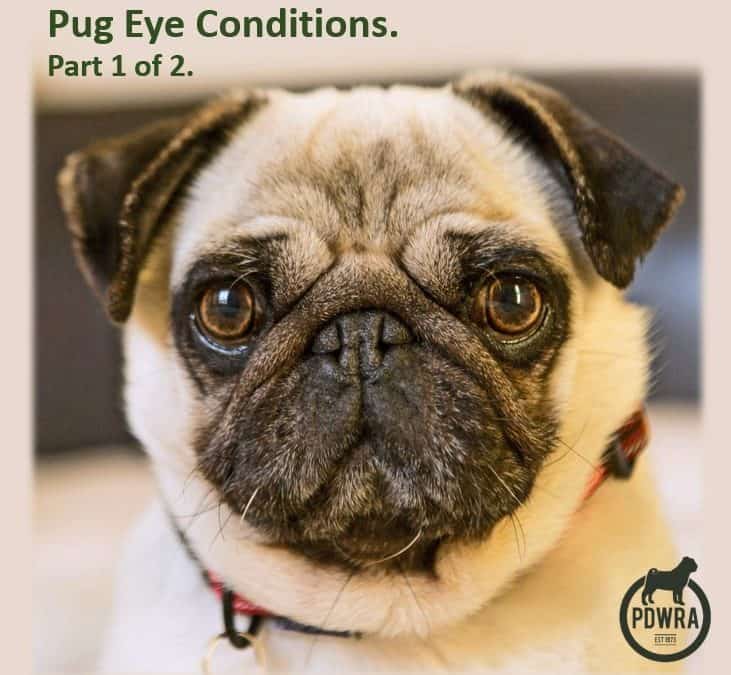
by Yasmin | 6 Dec, 2024 | Blog, News, Pug Health
Pugs have a number of significant eye conditions caused by extreme breeding creating the squashed appearance of the face. This has resulted in a shallow orbital cavity (the bony area where the eye sits), large palpebral apertures (the exposed eye) and prominent eyeballs. This together with reduction of corneal sensitivity in pugs, leads to a significant number of serious eye conditions, which are mainly due to the exposure of the eyeball and the reduced protection it has.
Because of the number and complexity of these conditions, I’m dividing the article into 2 parts (the 2nd will be in the next newsletter).
The 1st topic is as follows:-
Corneal Ulceration and Associated Conditions
Corneal ulceration (top layer of cornea is absent) can result from trauma (due to the vulnerability of a pug’s eye), hairs rubbing on cornea, or a dry cornea due to inability to close eyelids and/or lack of quantity/quality of tears. And as pugs get older, their cornea becomes more friable (and thus more prone to ulcers) so extra care and attention is needed with an aging pug’s eyes.
Unlike other dogs, when a pug has a corneal ulcer, it is potentially an eye threatening condition.
A pug’s cornea is poor at healing, so when the cornea is damaged, it is imperative to get your pug to the vet as soon as possible.
The ulcer needs to be treated intensively, and it is important your vet does this, rather than treat in a way they would a non-brachycephalic dog.
This can involve use of anti-inflammatories, along with a good quality antibiotic drops and serum or equivalent products. Drops need to be used multiple timer an day, and check ups very frequent to ensure the eye is responding to treatment.
Corneal ulceration can rapidly deteriorate to what its known as a melting ulcer without (and even with!) intensive treatment hence the frequent check ups required.
If not monitored closely, an ulcer can quickly result in a ruptured eye when surgical intervention to save the eye is too late.
If possible, as soon as a corneal ulcer is diagnosed, if you have access to an Advanced Practitioner in Ophthalmology, I would advise seeing them so the pug has the optimal treatment from the start.
A melting ulcer is where the lining of the eye (corneal stroma) starts dissolving due to bacterial and/or enzyme activity and needs intensive treatment or surgical intervention.
Non-surgical options include use of a specialised contact lens.
Sometimes the ulcer remains superficial and non-healing and the vet may suggest debridement of the edges of the ulcer to stimulate healing.
When an ulcer becomes deeper, the internal structures of the eye starts to bulge out through the cornea, which is a condition known as a descemetocele.
This is a photo of Quinn, a long term foster pug with the Charity, who recently developed the condition despite intensive treatment of the eye ulcer.
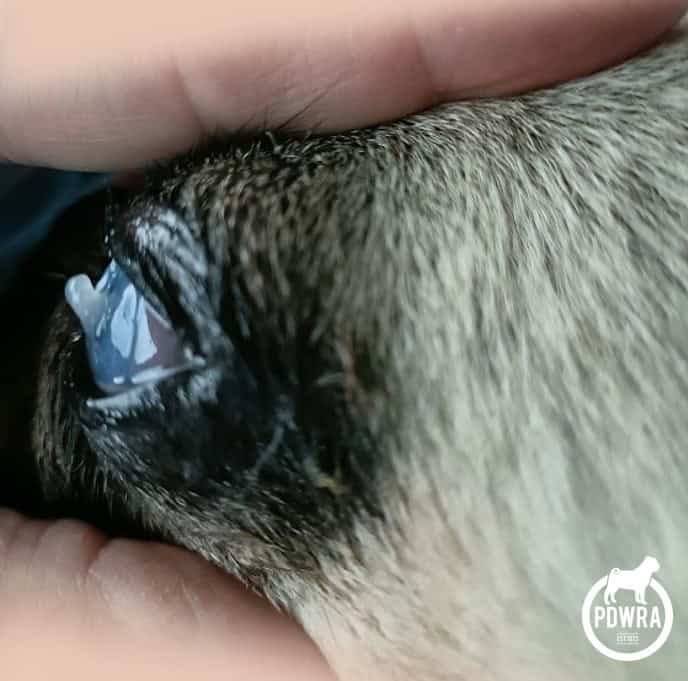
This is an ocular emergency, and will require immediate surgery if the eye is to be saved.
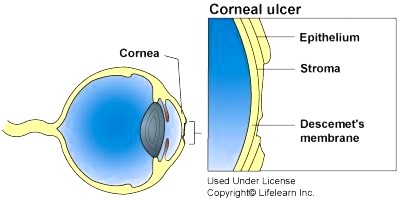
If the membrane breaks down, the eye will rupture (incredibly painful) and immediate surgery to remove the eye is the only option.
When an ulcer is rapidly deteriorating, surgical intervention allows the best outcome to save the sight in the eye.
If the dog has little/no sight in the affected eye, an option may also be enucleation (removal of the eye).
The most common surgery is a corneal graft, where a healthy part of the cornea is used to cover the damaged cornea. It requires a specialist to perform and is expensive, but well worth it in preserving the sight in an eye.
Another graft type uses the conjunctiva (conjunctional graft). This procedure is used when there is not enough healthy corneal tissue to use use for a graft. The conjunctiva is thicker and less translucent than corneal tissue so can reduce vision, so the preferred method is to use the cornea if at all possible.
Quinn had conjunctival graft surgery as there was too little non-damaged cornea to use for a corneal graft. His eye is recovering nicely though vision significantly reduced.
Photograph 6 weeks post op.
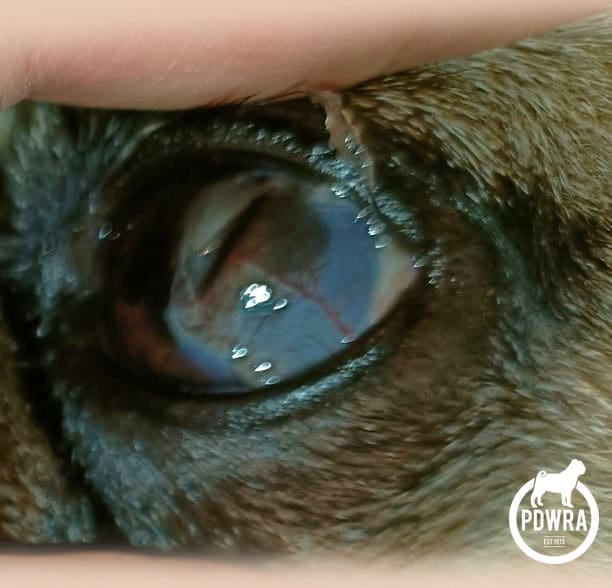
Following both graft surgeries, close and intensive management and monitoring is required for several weeks, to ensure the graft has been successful and the eye is healing appropriately.
Once the eye is healed the vet may recommend some ongoing maintenance treatment of the eye, for example, keeping the cornea moist by use of lubricants.
I personally think that all pugs potentially have dry corneas (and therefore an increased risk of eye ulcers), so I use a lubricant on all my pugs twice daily. A non-expensive eye lubricant that can be used as a preventative (rather than to treat a specific condition) is Carbomer which can be bought quite cheaply on Amazon.
I hope you have found this article informative, without being too technical. Part 2 of this article is available here.
The take home message is, if you notice your pug squinting, take him/her to the vet as soon as possible as it’s most likely there is a corneal ulcer, which is a potentially eye threatening condition.
Helen McKee (MRCVS)
Veterinary Advisor for the PDWRA
*******
Other PDWRA Pug Health Articles.
For more information on Pug Eye Conditions, please see: Eye Problems | The Pug Dog Welfare & Rescue Association
&
Other Pug Health Conditions, please see: Pug Health & Wellbeing | The Pug Dog Welfare & Rescue Association
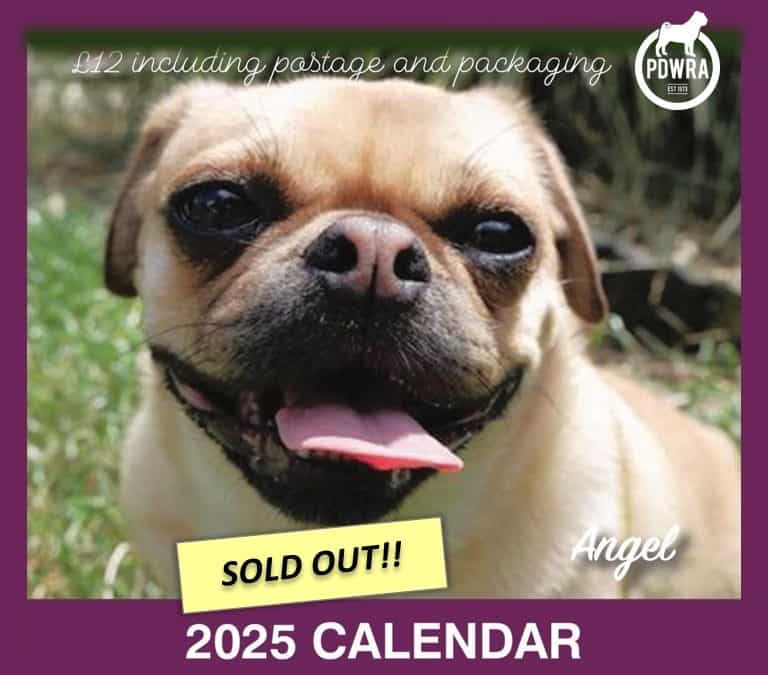
by Yasmin | 1 Dec, 2024 | Blog, News, Fundraising
** UPDATE 10th Dec – SOLD OUT!! **
The PDWRA 2025 Calendar is available to order now!
With “Thanks” to all pug parents who submitted their delightful photos.
A limited number of calendars have been printed so please get your order in Now!
At Only £12, including 2nd class postage, it’s a great way to support us too!
Please email any enquiries about the calendars to:
secretary@nullpugwelfare-rescue.org.uk
The gift to yourself to last the whole year!
Thank You.
https://pugwelfare-rescue.org.uk/fundraising-events/

by Yasmin | 29 Nov, 2024 | Blog, News, Fundraising
Whether you’re buying Christmas presents, next months’ dog food or next years’ holiday or even annual insurances, you could take advantage of Black Friday discounted sales while supporting PDWRA at the same time!
Here’s How – and it doesn’t cost you a penny! The donations are made by the brand.
With over 7,000 retailers – including Tesco, Pets at Home and Amazon – you can easily join the PDWRA supporters who have already helped us receive over £4,450 through Easyfundraising.
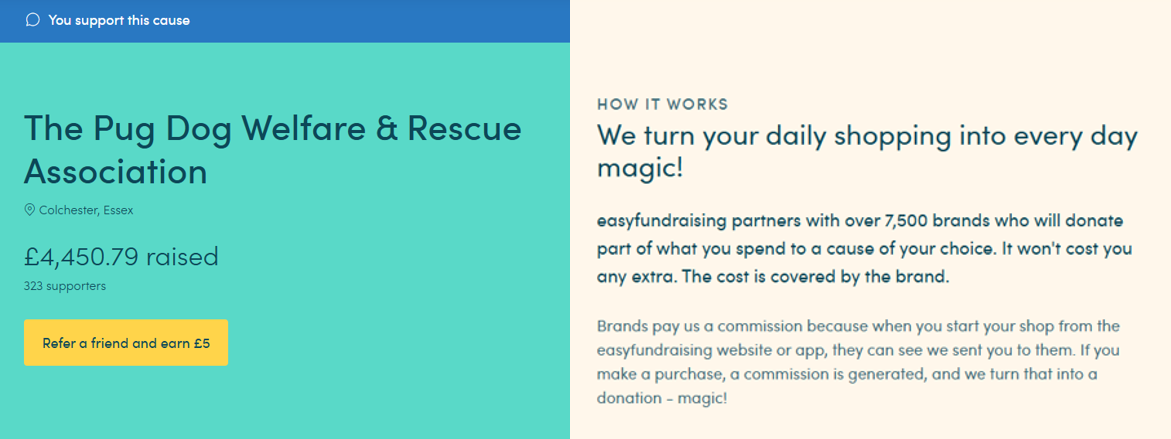
All you have to do is sign up for Easyfundraising, select The Pug Dog Welfare & Rescue Association, create your profile and shop!
https://www.easyfundraising.org.uk/create-an-account
https://www.easyfundraising.org.uk/causes/pdwra/
For other ways to help PDWRA via shopping or recycling, please see:
https://pugwelfare-rescue.org.uk/fundraising-events/donate-while-you-shop-or-recycle/

by Yasmin | 23 Nov, 2024 | Pug Home Appeal, Blog, News, Rescue Stories
👏 ** TERRIFIC NEWS UPDATE: Cindy & Sid have found their HOME TOGETHER! ** 👏
**********
ORIGINAL APPEAL:
Cindy and Sid are a bonded 6 year-old sister and brother. They are both neutered and looking for their forever home together.
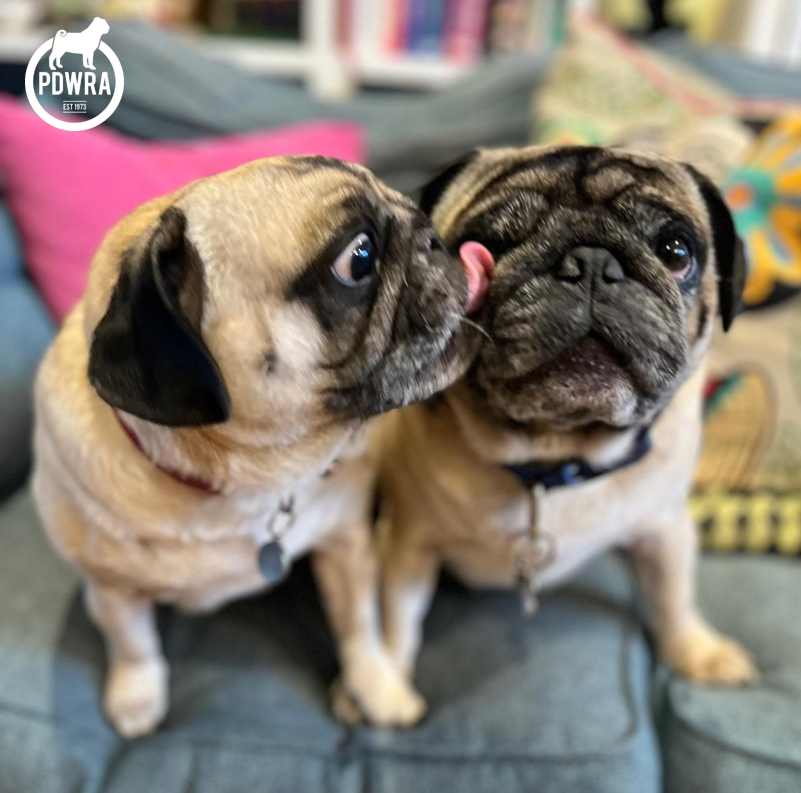
They both love children and are sociable around other dogs, more so Sid. He can be quite needy and looks to his sister, liking being near to her. Cindy is the more dominant of the two, and would be better suited in a home with no other female dogs.
Both are well behaved on walks when meeting other dogs and people.
Cindy has had corrective surgery to address breathing problems she’s had in the past and now experiences no discomfort.
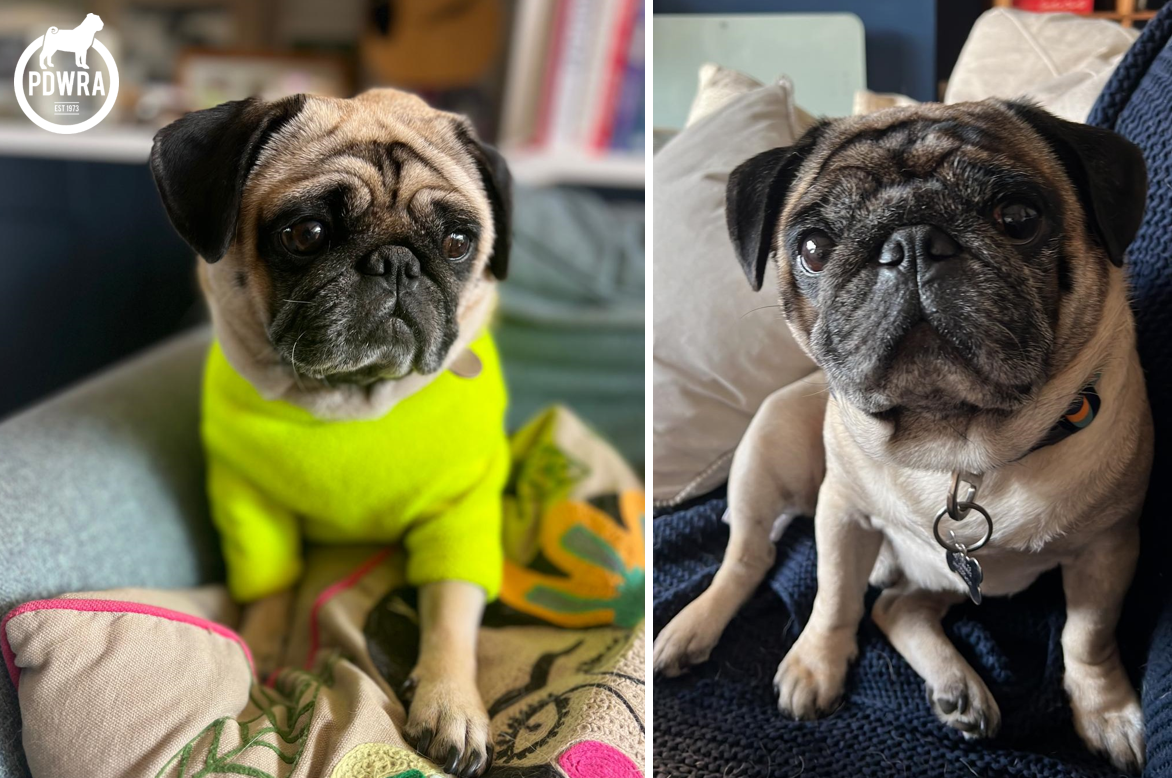
Sid has a condition called Dry Eye which will require regular application of eye drops, (funded by PDWRA as it’s a pre-existing condition), other than that they are both healthy and happy pugs who enjoy a life of walks, cuddles and a nice cosy bed to snuggle in.
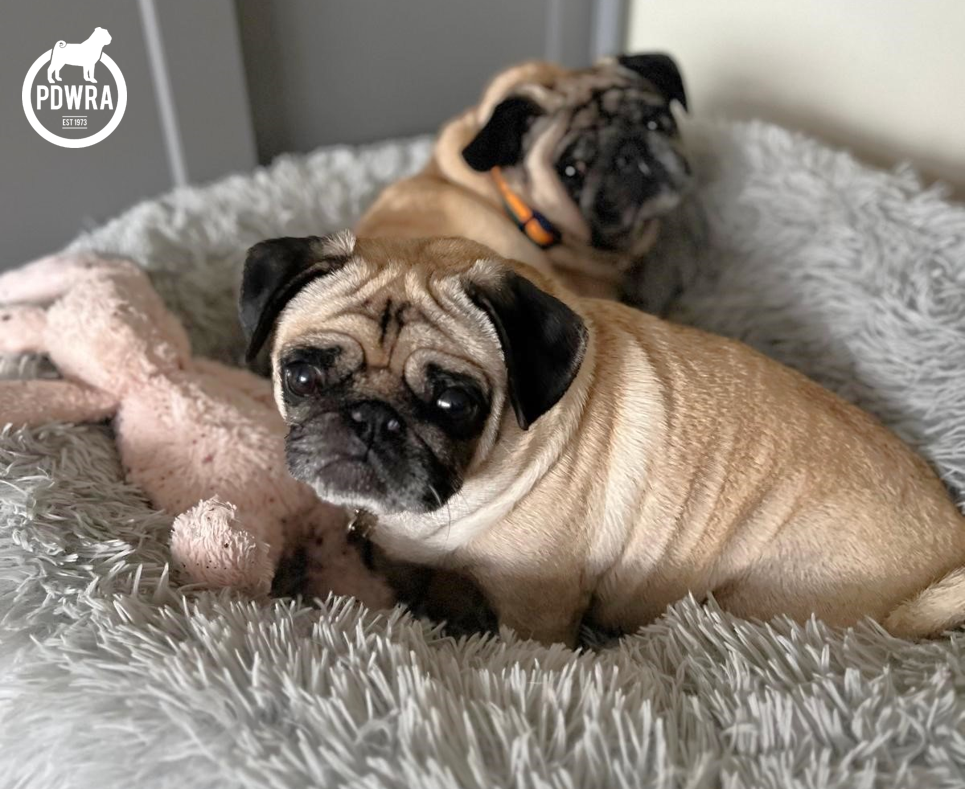
Despite being bonded, this doesn’t stop them from individually seeking human attention (competing!?), so you can expect to be snuggled from both sides!
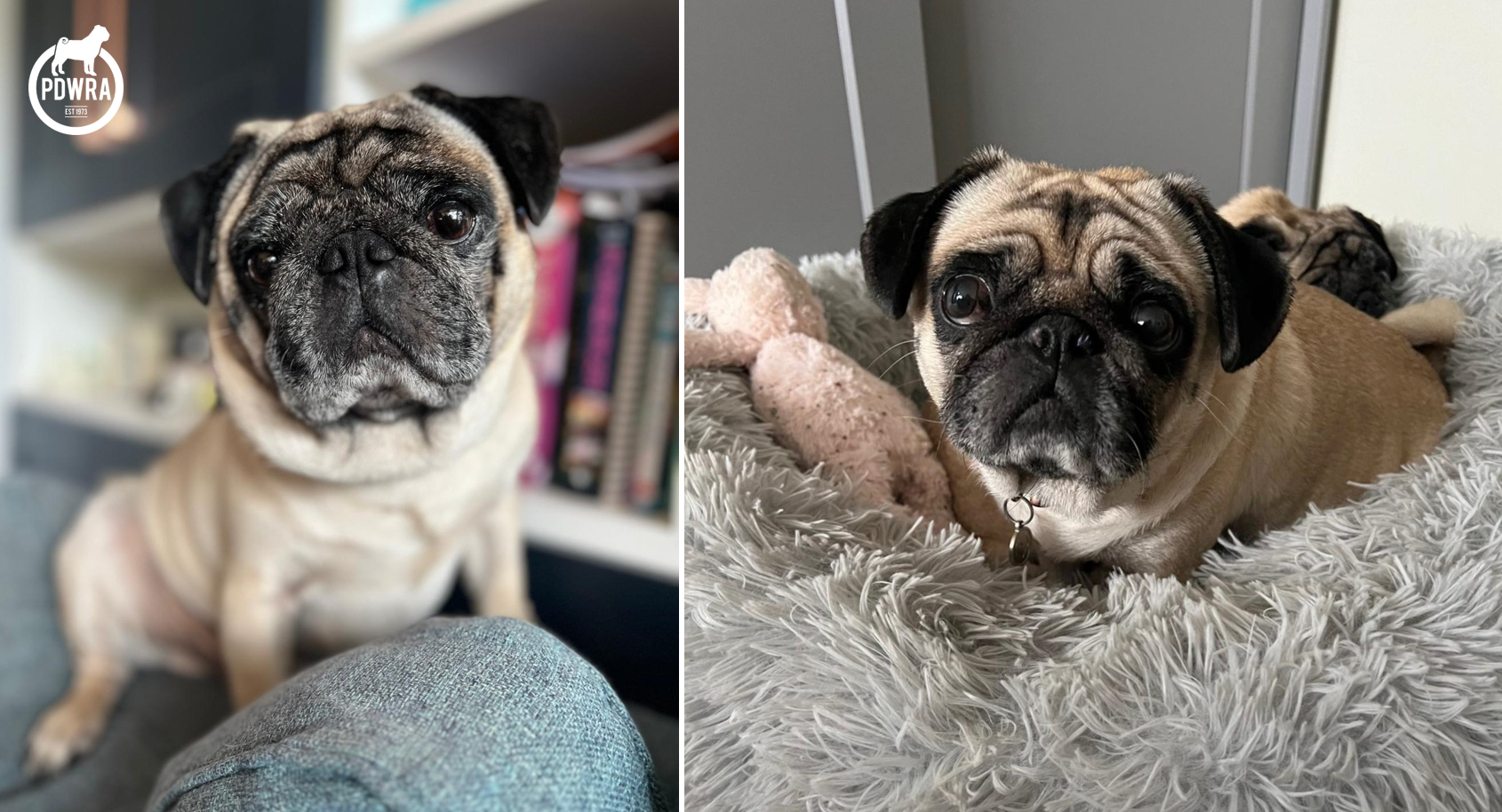
If you are able to offer them their forever home together, please apply, referencing Sid 24157 & Cindy 24158 on your adoption application form.
Please do so at: https://pugwelfare-rescue.org.uk/adopting-a-pug/
If you have any specific questions relating to the pair, please email Jackie at: west-mids@nullpdwra.org.uk
Thank you! We are always in need of new homes for bonded-pairs.
If you are already registered with us, please speak to your local PDWRA Area Coordinator directly.





















